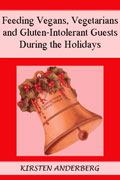The Right to Church Asylum, Circa 1772
by Kirsten Anderberg, Written Dec. 16, 2015
Watching the world struggle, yet again, with the concept of immigration, refuges from war zones, etc., I thought it might be interesting to look at how this issue was tackled by Spain in the late
1700's. These rules were also passed on to the Spanish fathers running the CA missions at the time, and thus, these rules of asylum also applied to CA in the late 1700's as well.
I stumbled on this 1772 document, in a book published in 1912 about the CA missions, while I was doing research for a book I am writing about the San Fernando Mission. The San Fernando
Mission, located in northern Los Angeles County (California, USA), and founded in 1797, welcomed visitors and asylum seekers using its own discretion, while also holding down a fortress-like industrial complex at the edge of civilization in the Wild West under the long arm of Spain. Bandits were common in this area, and large, thick wooden doors at the front entrance of the mission were used to both keep people out, and let people in.
The San Fernando Mission's reception area, cots for travelers, and special rooms for church authorities and rich patrons, are evidence of the hotel-like environment offered to those the mission fathers recognized as allies. Important politicians and high-level church officials were treated quite differently when they arrived at the mission seeking down time, given private rooms with expensive furnishings, while lower class visitors slept in dorm rooms on simple rope cots. Indians lived in labor camp conditions, in dorms, away from the esteemed visitors, while producing the food, drink and comforts afforded the visitors while staying at the mission. Class and race divisions were prevalent.
But alike our issues with terrorism in the world today, the Wild West was full of bandits. There was an issue of protection at the mission. You did not want to just open the fort doors to anyone who knocked. In fact, according to the mission, it had a jail for those the padres deemed too mischievous, as they awaited law officials to pick them up, so not everyone was offered "asylum" in the church. In recent times, we have also seen the churches used as asylums along the southern U.S. states with regard to migrant worker issues. And alike today's conditions in many unstable countries, the mission fathers had little to protect them on the outskirts of town as different governments came and went. Looking at how the Catholic Church legislated asylum, then, in 1772, actually can reflect upon some parallels still evident today.
When the San Fernando Mission was founded (1797), there was a Spanish authority claiming ownership, using military enforcement, of the land in Southern CA. The missions were originally set up and staffed by Spanish padres in an expansion effort. But then the Mexican Revolution came in the mid-1840's, quickly followed by CA becoming a state in 1848, and thus Southern CA changed hands from Spain, to Mexico, to the United States, all within the time the fathers at the mission were in the heyday of their work. Those who were allies sometimes turned to enemies, things were in flux. So, this outpost on the edge of town, a respite of wine, water, food, and beautiful, thick-walled adobe and tile buildings, offering cool shade in an area with desert-type heat, above 100 degrees yearly, was also a target for bandits and those in the Mexican Revolution who were working to overtake Spanish rule in CA. So, it is interesting to see who the mission gave asylum to and why, and to see what the "rules" for such asylum were.
In Father Zephyrin Engelhardt's 1912 book entitled, "The Missions and Missionaries of California, Volume II," a copy of the Papal Bull about asylum in churches from 1772 is displayed (it is reproduced in this article). The document says, "The Right of Asylum for the fugitive was recognized throughout the Christian ages, and may be traced to the very temples of pagan antiquity. The reputed criminal, when he took refuge in a place dedicated to God, was held inviolable. He could not be forcibly removed, nor wounded or killed. No one could be prevented from supplying him with food while he remained in the sanctuary. The privilege grew out of the universal sentiment that it was wicked to do violence to anyone who had placed himself under the protection of God. Its object was not to shield the guilty; but to protect the innocent from the unreasonable frenzy of relatives or the injustice of unscrupulous officials."
"The right was established by the Law of Moses," the Papal Bull says, and the Catholic Church attached this immunity to "all places of public worship." It says that even if someone committed murder, and took refuge in a church, "he could not be taken from the sanctuary by the civil or military authorities; but the representative of justice could demand him from the priest in charge, and the latter would then deliver the culprit to the officials of the secular court after having received the written assurance that the accused should receive a fair trial." Actually, this sounds a lot like political asylum we offer to people coming to America for refuge now. The book then goes on to say that any military or government official who used armed weaponry to extract a criminal over protests from the pastor in charge without the proper paperwork guaranteeing a fair trial "incurred excommunication." It is interesting that the church had enough power to make excommunication a viable threat to law enforcement and military authorities.
Engelhardt says that the King of Spain declared in Nov. 1773, and it was published in Mexico in May 1774, that church asylum was law and that this premise was "binding on the officials in America." Thus, these were the early rules of asylum in CA while under Spanish rule, as well. It shows that church officials immediately placed themselves in a juxtaposition to the judges, police, legislators…using the law of the church as an independent body almost above the law, or at least, setting the rules of play. I can imagine this angering many lawmen and early politicians.
The royal rules about asylum said that: 1) The asylum seeker of any sex, station or condition showing up at a church would be given asylum and kept in a prison for his own safety at the church, paid for by their own means, the community, or even the King of Spain; 2) If after thorough investigation of claims it was proven that the asylum seeker was lying, they will be "punished with prudence and discretion," and then let back into the world without asylum from legal entities; 3) A hearing regarding asylum seekers' crimes must be heard within 3 days unless something extraordinary occurs (alike our right to a speedy trial), and if it is a military crime, they will be turned over to military police and if it is a non-military crime, they will be heard in front of a "royal audience of the territory" (alike our jury of peers system). The sixth and seventh provisions of this asylum document say that if a crime is "of an enormous nature," and a crime that this law cannot give asylum to, and proper evidence has been submitted, then the church would expedite the criminal for "speedy execution," thereby eliminating the concept of the church holding the accused until they were assured the person would not be in harm if surrendered to authorities.
Looking at this document and the mission fathers' dilemma of who to hold for asylum and who to surrender to authorities, and under what conditions, in a land known often for its lawlessness and rogue justice, it is clear the issues facing the world now regarding immigration and asylum are not new. Many of the issues addressed in this 1772 Papal Bull reflect issues we are battling with currently. The balance of rights versus punishment, the issue of who we give special treatment and protection to, and who we throw to the lions for rogue justice, and how we ascertain facts from accusations, and how one facilitates "prudent" punishment - these are all 21st century problems, mirrored by 1772 documents. Perhaps these are human problems that never disappear.
Figuring out who the enemy is can be challenging. In the early 1900's, a bandit named T. Vasquez was legendary in the Los Angeles County area. The rocks where he would hide out now bear
his name, "Vasquez Rocks." The local newspapers were full of articles about how Vasquez was a ruthless thief and killer. Yet if you talked to the locals, he was considered a hero, a real
life Robin Hood. The reality seems to be that Vasquez was a Mexican rebel and he resented the Colonialists in CA. So, he terrorized the gringos who arrived, robbing them, behaving violently
with them. But stories are told that when Mexicans in CA ran into him, he would laud them with money and food. He never stole from his own people, but rather redistributed wealth from the
settlers back to the Mexicans who lived there first. So, if Vasquez showed up at a settlers' camp, he would be treated like a criminal, but when arriving in a Mexican local camp, he was
treated like a hero. These divisions also mirror today's world situation. As I have said a million times, it is much harder to radicalize people who are not hungry and have their needs met.
Often terrorist groups in the Middle East provide food, clothing, goods, just as Vasquez did, to their own people when no one else cares or will help. This gets them in good favor with
locals. When the U.S. backed the failing South Vietnam government, and tried to win that battle with exponentially superior firepower, and lost, it was due to this phenomenon that we lost.
North Vietnamese people were feeding the South Vietnamese while Americans were bombing and burning them with Napalm. It did not take long before the South Vietnamese recognized the North
Vietnamese as their allies above the U.S. and it was due to local allegiance to North Vietnamese troops in South Vietnam that Vietnam is united as we know it now. Alike Vasquez and Mexican locals in CA, South and North Vietnamese had a common enemy in the U.S. and thus even a superpower was brought down by people power.
Certainly part of the problem regarding asylum now is also in being able to tell who is the enemy. In the Vietnam War, American soldiers were told "a dead Vietnamese is a dead VietCong…"
There was a problem in that American military could not tell the difference between a South Vietnamese citizen they were supposed to be protecting and a North Vietnamese citizen who was
supposedly the enemy, so very often American soldiers shot and killed people we were supposed to be protecting due to misidentification. So, the military brass told them that once they are
dead, the U.S. would just list them as dead North Viet Cong rebels…regardless of who they really were. This bred intense hatred of American troops among both the South and North Vietnamese
and made recruiting South Vietnamese citizens to act against the U.S. nearly impossible. In the end, the U.S. pulled out of Saigon in utter shame. And this is happening today too.
Too many Europeans and white Americans seem to be viewing all dead Muslims as dead terrorists…in many ways - akin to Vietnam. And if we applied the Papal Bull for asylum from 1772 to modern day
Muslim people seeking asylum, how would that look?
Over the centuries, the issue of asylum and who the enemy is, and from which side they are enemies and which side heroes…has always been complex. It was just as hard to figure out in 1797 in CA, as it was in 1772 in Spain. It was as confusing during the early 1900's in the Wild West with Vasquez, as it was in the 1970's in the Vietnam War. The purpose of documenting harmful history is often to not repeat it. But we seem to be in a loop, just spinning round and round on this topic. I have no real insight to offer as a conclusion. I can only say that I have seen all of this before, throughout history, on many different stages…and often it seems we do not learn from the past. We could learn a lot about what is going on with Middle Eastern terrorism right now by studying what Americans did in the Vietnam War. It is very similar, actually. As the 1772 Papal Bull said, the asylum was not to "shield the guilty, but to protect the innocent from the unreasonable frenzy of relatives or the injustices of unscrupulous officials."


1912 copy of the 1772 Papal Bull on Church Asylum
Thank you to Resist.ca for hosting this website!










